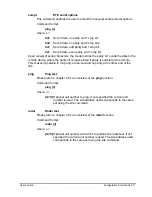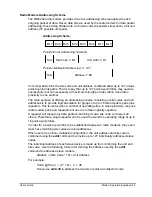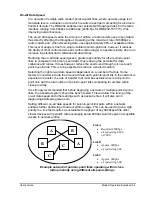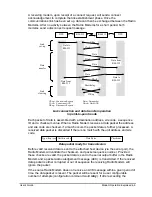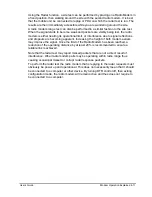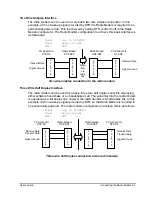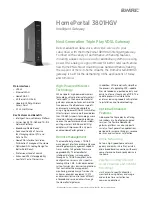
The radio modem provides three kinds of serial port flow control: hardware
(RTS/CTS), software (XON/XOFF) and none.
XON/XOFF Flow Control (Software)
This type of flow control is performed by sending XON and XOFF control codes in the
data stream. The XOFF code makes a transmission halt request, while the XON code
makes a transmission restart request.
Since these two codes, XON and XOFF, are used as flow control characters, binary
data that has these codes cannot be transmitted or received.
RTS/CTS Flow Control (Hardware)
Hardware flow control is performed by using the control lines RTS (Request To Send)
and CTS (Clear To Send). Data flow from the DTE to the DCE (TXD) is controlled by
CTS, and data flow from the DCE to the DTE (RXD) is controlled by RTS.
CTS
RXD
RTS
TXD
DTE
DCE
RTS/CTS functionality.
No Flow Control
Flow control between the radio modem and the host device can be turned off
altogether. With flow control disabled there is no protection offered by the radio
modem to prevent its internal buffers from overflowing. If an overflow occurs within the
radio modem, serial data is lost and the data transfer becomes corrupted.
When operating with flow control disabled the user must be aware of the maximum
internal buffer size of 96 bytes in the radio modem. The user must also be aware of
the on-air transfer rate between a pair of communicating radio modems. Radio
interference and other radio modem pairs operating within close proximity can affect
the on-air transfer rate.
With flow control disabled it is recommended, to reduce the risk of the radio modem
internal buffers overflowing, that the baud rate between the radio modem and the
local/remote device be kept at or below 9600 (2400 for RMX232-151/173). This
depends entirely on what other radio devices and/or interference may be present.
Radio Modem Port Flow Control
Radio modem port flow control refers to flow control between two radio modems.
If data transmission from the radio modem, under serial port flow control, is interrupted
because the receiving computer (DTE device) cannot catch up with it, modem port
flow control is applied to the remote radio modem by means of a flow hold request.
Data packet retransmissions will be attempted periodically until the remote radio
modem removes flow control.
User’s Guide
Modem Operation Explained 4-2
Summary of Contents for RMX232
Page 42: ...User s Guide ...
Page 43: ...User s Guide ...













